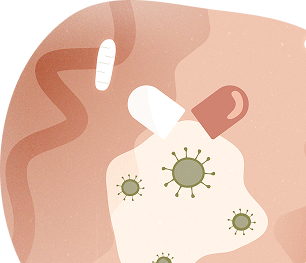If you’ve struggled with recurrent yeast infections or bacterial vaginosis (BV) and found little relief from over-the-counter creams or antibiotics, you’re not alone. Many women turn to boric acid suppositories as a trusted alternative when traditional options fall short.
What makes boric acid effective is its ability to restore vaginal pH, kill resistant microbes, and provide long-term symptom relief. But like any health remedy—especially one used internally—it’s crucial to understand how to use it properly, what dose is safe, and how effective it really is.
What Are Boric Acid Suppositories?
Boric acid is a natural compound made from boron, a trace mineral found in seawater, soil, and fruits. In medical use, it’s formulated into vaginal suppositories that are inserted into the vagina, not taken orally.
These suppositories typically contain 600mg of pharmaceutical-grade boric acid, encased in a gelatin or vegetable-based capsule designed to dissolve inside the vaginal canal.
Why It’s Used:
● Recurrent vaginal yeast infections (especially those resistant to fluconazole)
● Bacterial vaginosis that recurs after antibiotics
● Vaginal pH imbalance (common after menstruation, sex, or antibiotics)
● Ongoing vaginal odor or discharge not caused by STIs
Recommended Dosage of Boric Acid Suppositories
The standard dosage depends on your condition and treatment goal. Below is a guide based on clinical studies and OB/GYN recommendations:
✅ For Active Yeast Infection (Candida albicans or glabrata)
● Dose: 600mg (1 suppository)
● Frequency: Once nightly
● Duration: 7–14 consecutive days
This is especially useful for women who experience infections that don’t respond to traditional antifungal medications like miconazole or fluconazole.
✅ For Bacterial Vaginosis (Recurring)
● Dose: 600mg (1 suppository)
● Frequency: Once nightly
● Duration: 7–14 days
Some OB/GYNs recommend combining boric acid with a round of antibiotics like metronidazole, then following up with boric acid to maintain vaginal pH and reduce recurrence.
✅ For Preventative Maintenance
● Dose: 600mg
● Frequency: 1–2 times per week (often at night)
● Duration: Ongoing, with breaks
This is sometimes used in women who are prone to chronic infections, often after menstruation or sexual activity—times when the vaginal pH is most likely to fluctuate.
How Effective Are Boric Acid Suppositories?
Boric acid has been used for over a century in gynecological care and is backed by modern studies for its effectiveness in treating vaginal infections.
📚 Clinical Evidence:
● A 2009 study in Journal of Women's Health showed that boric acid resolved up to 70% of chronic yeast infections, particularly those caused by Candida glabrata, a strain known to resist azole medications.
● A 2021 systematic review published in Infectious Diseases in Obstetrics and Gynecology found boric acid to be a highly effective adjunct or alternative in treating both yeast and BV.
● CDC guidelines list boric acid as an accepted treatment for recurrent vulvovaginal candidiasis.
Why It Works:
● Restores vaginal pH to the optimal acidic range (3.8–4.5), which inhibits pathogenic growth.
● Disrupts Candida biofilms, a defensive shield that yeast cells form to protect themselves from medications.
● Reduces inflammation and odor associated with BV and yeast overgrowth.
Safety Considerations
While boric acid is effective, it isn’t risk-free. Misuse or misunderstanding of its purpose can lead to discomfort—or more serious health issues.
✅ Safe When:
● Used vaginally only (not orally)
● You follow the recommended 600mg dosage
● Not used longer than prescribed or needed
● Stored away from children and pets
❌ Not Safe When:
● Ingested orally — boric acid is toxic if swallowed
● Used during pregnancy without physician approval
● Inserted while you have vaginal wounds, sores, or abrasions
● Combined with other vaginal treatments unless directed
Common Side Effects (Usually Mild):
● Watery discharge
● Mild burning or irritation
● Occasional itching
These typically go away after a day or two. If symptoms worsen, stop use and consult a healthcare provider.
Tips for Proper Use
● Insert the suppository at night before bed to prevent leakage.
● Wash your hands before and after insertion.
● Use a panty liner to protect your underwear.
● Avoid sex during treatment—boric acid can be irritating to both partners.
● Store suppositories in a cool, dry place.
For long-term maintenance, consult your doctor. Using boric acid more than a few times per month without medical guidance isn't recommended.
Can You Use Boric Acid with Other Treatments?
Sometimes. Boric acid is often used after antibiotics or antifungals to maintain pH balance or prevent recurrence. However:
● Don’t use it at the same time as antifungal creams or prescription gels unless instructed.
● Avoid combining with essential oils or DIY remedies—this can increase irritation.
Always tell your doctor what you’re using to avoid unwanted interactions.
When to See a Doctor
While boric acid can help manage chronic issues, it’s not a substitute for a proper diagnosis. Vaginal discomfort, odor, or discharge can have many causes—including sexually transmitted infections (STIs), hormonal changes, or dermatologic conditions.
See a healthcare provider if:
● You’ve never had a yeast infection or BV before
● Your symptoms don’t improve after a full round of treatment
● You experience fever, chills, or systemic symptoms
● You suspect you’re pregnant
Final Thoughts: A Smart Addition—With Care
Boric acid suppositories offer a reliable, research-backed option for women dealing with recurring vaginal infections. When used correctly, they can help restore balance, reduce symptoms, and even prevent future flare-ups.
But as with any internal treatment, the key is safe, informed use. Stick to the recommended 600mg dosage, avoid use during pregnancy, and never ingest it. Boric acid is powerful—but only when handled with the respect it deserves.
If you're unsure whether it's right for you, bring it up with your OB/GYN. A few questions and a short conversation could lead you to long-term relief and a healthier vaginal ecosystem.


